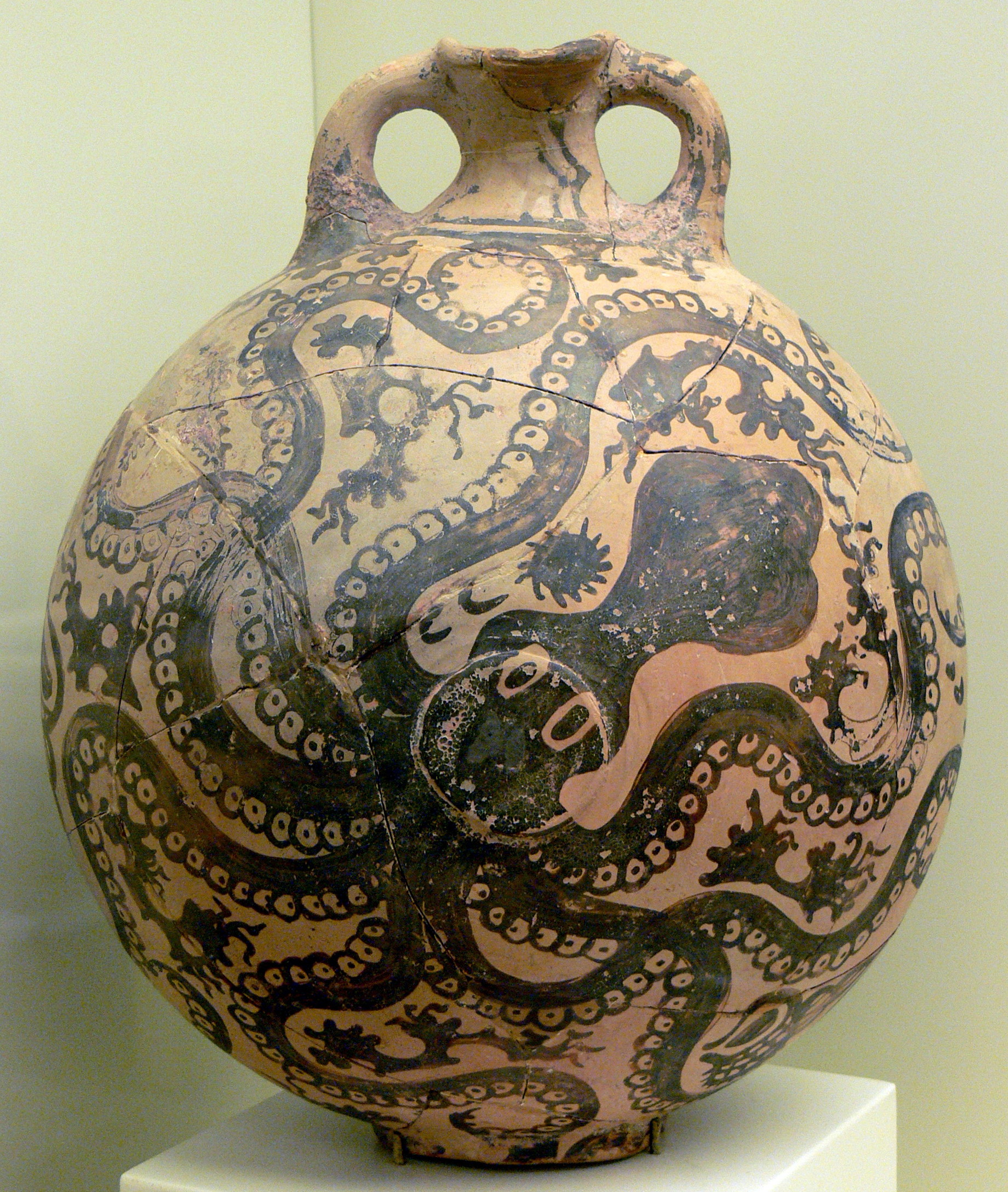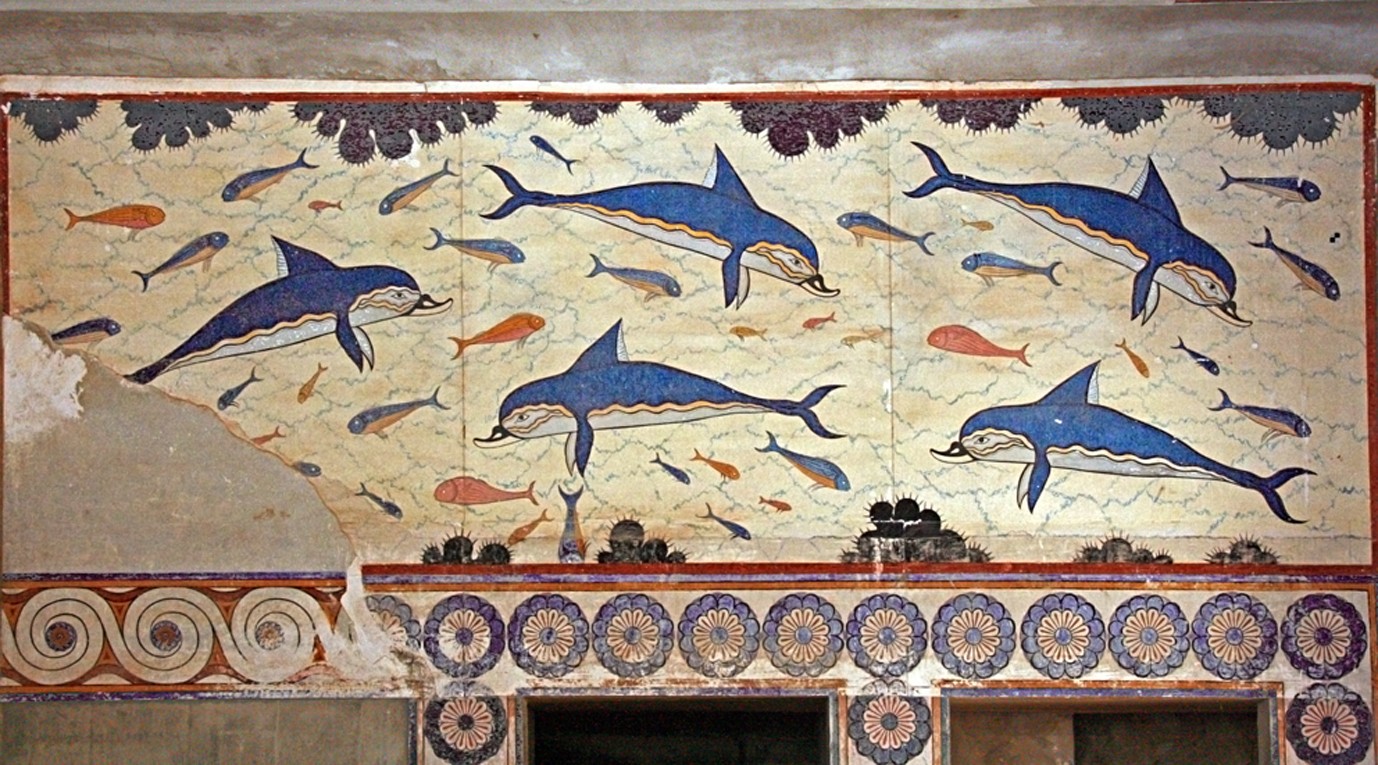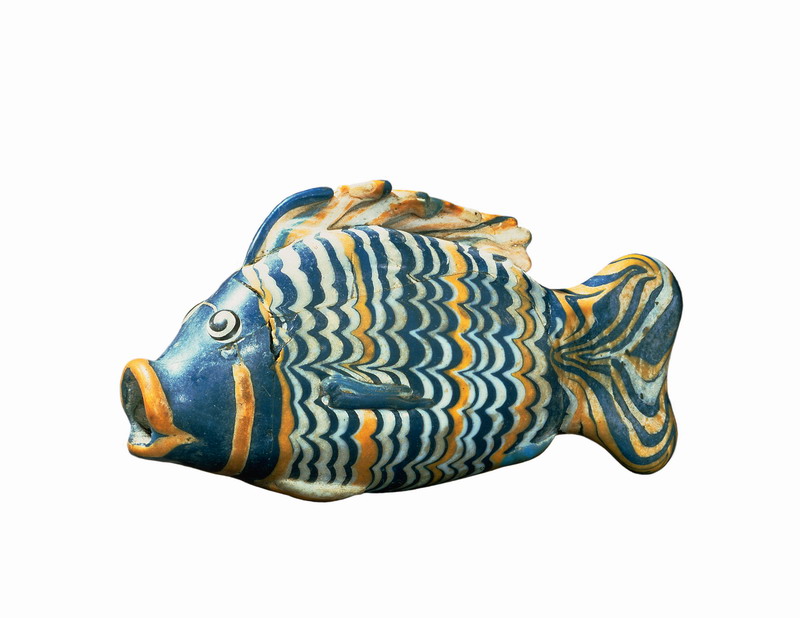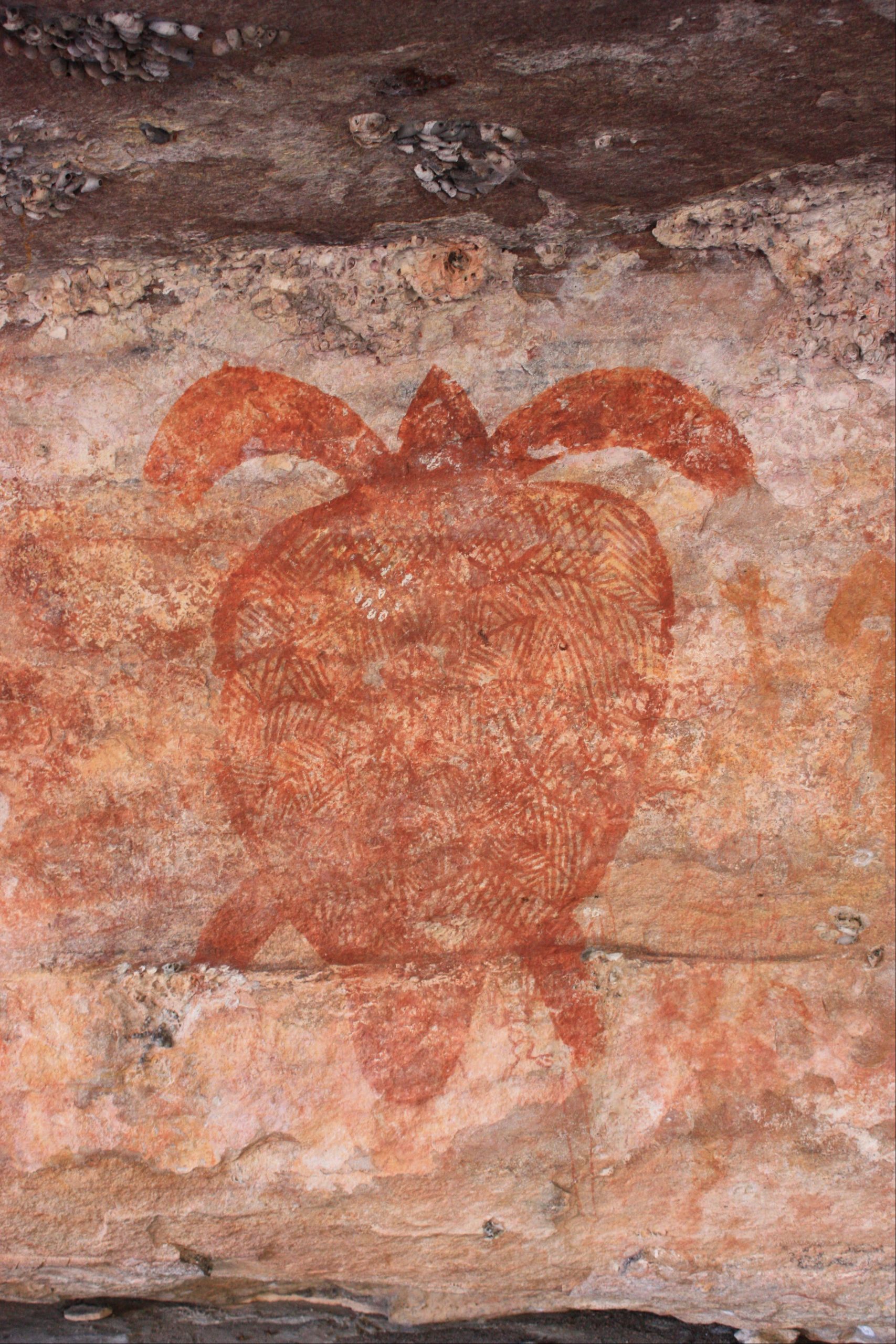34 Sea Themes in Art and Poetry

Minoan art is characterized by an elegant innocence and almost whimsical design that is drawn from nature. Dolphins, octopus, and other marine life images were popular in Greek amphoras.
You can read more about the Octopus vase pictured above here, and more on Minoan art here.
“The Kraken” by Alfred Lord Tennyson
Below the thunders of the upper deep,
Far far beneath in the abysmal sea,
His ancient, dreamless, uninvaded sleep
The Kraken sleepeth: faintest sunlights flee
About his shadowy sides: above him swell
Huge sponges of millennial growth and height;
And far away into the sickly light,
From many a wondrous grot and secret cell
Unnumbered and enormous polypi
Winnow with giant fins the slumbering green.
There hath he lain for ages and will lie
Battering upon huge seaworms in his sleep,
Until the latter fire shall heat the deep;
Then once by men and angels to be seen,
In roaring he shall rise and on the surface die.
You can find more information about the common octopus here.
Excerpt from “Paper Nautilus, Octopus of the Open Sea” by James MacDonald (JSTOR Daily, 2019)
“Walking along a shore facing the open ocean, a beachcomber may make an extraordinary find: a paper-thin spiral shell, anywhere from two to around ten inches across, intricately patterned with ridges. These aren’t snail shells. They’re the egg cases of the paper nautilus, the world’s only seafaring octopus.
Paper nautilus is actually the name for the shell of female Argonautidae. This family of small octopuses lives in the pelagic (open ocean) zone rather than near the seafloor like most octopuses. They are unrelated to the better-known chambered nautilus.
As discussed by zoologists Julian Finn and Mark Norman in Proceedings, the function of the paper nautilus shells has puzzled naturalists all the way back to Aristotle. It is now known that, unlike most octopuses, female argonauts do not lay their eggs in a hole. Rather, they use the shell as a mobile breeding chamber, and may breed several times in their lifetime.
Finn and Norman also determined that the shell has another function benefitting the pelagic lifestyle—it helps the female argonaut maintain buoyancy. At the surface, the argonaut sucks air into her shell. When she reachers her desired depth, she uses two modified tentacles that spread out like paddles to seal off the interior of the shell, trapping the air. The trapped air allows her to maintain neutral buoyancy and swim more efficiently.”


“An Egyptian Pulled Glass Bottle in the Shape of a Fish” by Marianne Moore
Here we have thirst
And patience, from the first,
And art, as in a wave held up for us to see
In its essential perpendicularity
Not brittle, but
Intense—the spectrum, that
Spectacular and nimble animal the fish,
Whose scales turn aside the sun’s sword by
Their polish.
From Art and Artists: Poems, edited by Emily Fragos (2012)
Aboriginal Art from Australia

Public Domain, https://commons.wikimedia.org/w/index.php?curid=21881386
Excerpt from “The Oceanian Legacy” in Journeys Through Dreamtime: Oceanian Myth by Tony Allen (Time Lifetime Series, 1999)
“While many Australian Aboriginal peoples believe that the world they inhabit was born of great upheavals in the entrails of the earth, some see its origins in a mighty deluge. They hold that a great flood swept away a prior creation to clear the way for the world we see about us today…. The destructive and creative power of the sea would be well known to dwellers in Australia’s coastal regions … the myth of a cataclysmic worldwide flood is believed by scholars to have originated at about the same time as the post-glacial changes stabilized themselves to mark out the Australian shoreline at its present level” (p. 28).

